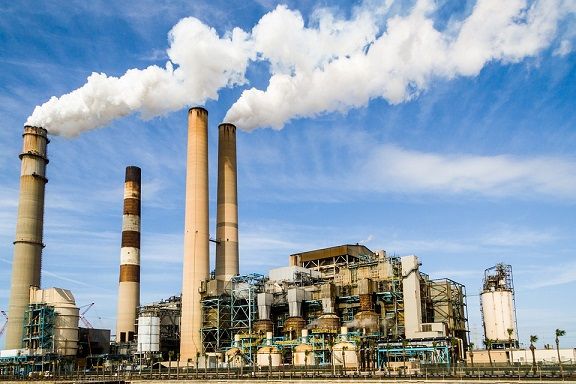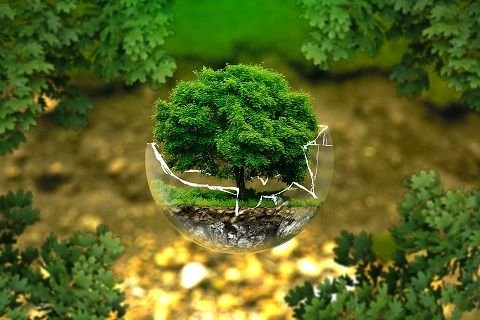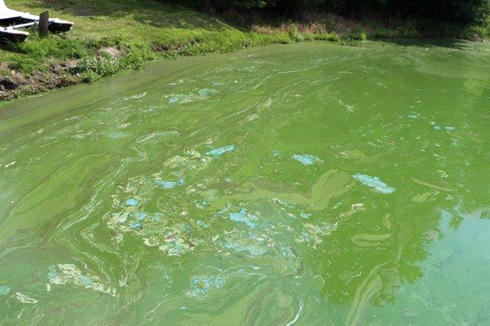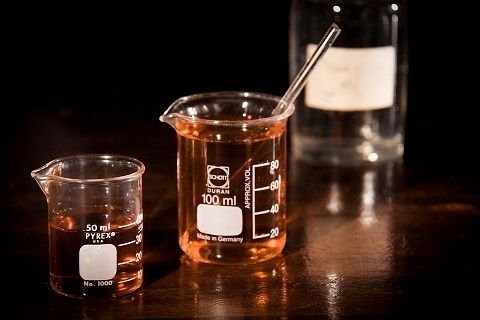Plants as bio-monitors of environmental pollution #1
The study of plants has thrown up a lot interesting discoveries that might be difficult to fathom by those that are not in life sciences. Perhaps I would have been in the same shoes, but for what happened in years back. I actually wanted to study medicine in the university because my parents felt it will increase my chances of getting a good job and being financially successful at the end of the day. Yes, African parents can be that manipulative and a bit selfish. However, the stiff competition for admission to study medicine made me to find myself in the Department of Botany. It was a bit disappointing to me and my parents but I brushed off the pessimism and studied hard to become a Botanist that I am today.
Without any doubts, various actions of man and some natural processes have constituted the release of certain substances to the environment. The release of these substances is not an issue until the substances get to a level of concentration that they become harmful to biological organisms in the environment, including man himself. This ipso facto summarizes what the definition of pollution is.

In this regards, any substance has the potential to be a pollutant given that its concentration in the environment gets to a threshold level. Pollutants range from solids to liquids to gases and combinations of the three states in different forms. These substances are released into the environment of living organisms which could range from aquatic environment, terrestrial environment to the atmospheric air itself. The activities of man and nature that cause pollution, their respective pollutants and their effects on the environment is highlighted in the table below:
| Activities | Released pollutants | Effects on the environment |
|---|---|---|
| Bush is burning | carbon (IV) oxide, oxides of nitrogen, methane, water vapour | global warming/green house effects, acid rain |
| Industrial discharge | smoke, particulate matters, acidic oxides, etc. | fog, acid rain, acidification of water bodies |
| Mining | heavy metals like copper, mercury, lead, tin, chromium, etc. | heavy metal poisoning of living organisms |
| Volcanic eruption | oxides of sulphur, water vapour, carbon monoxide | acid rain, carbon monoxide poisoning |
| Agricultural activities | elemental nitrogen and phosphorus | eutrophication of water bodies |
| Crude mining | crude oil and other chemicals | poisoning of aquatic organisms |
The plant consist of all living organisms that are capable of synthesizing their own food from inorganic substances and radiant energy from the sun. The radiant energy is absorbed by a magnesium containing compound known as chlorophyll. The include different groups such as algae, bryophytes, pteridophytes, gymnosperms and angiosperms with each group having its owing peculiar characteristics that makes it different from others.
Bio-monitoring on the other hand is the application of living organisms, be it plant or animal to monitor environmental changes in the environment dues anthropological actions . In most developing and underdeveloped countries of the world, increased industrialization and lack of policies on environmental regulation has led to the presence of varieties of toxic substances in the atmosphere, in water bodies and has rendered several terrestrial environment useless for agriculture and other related activities. There is a need for frequent or constant monitoring of the environment for pollution.

In order for a plant to be suitable for bio-monitoring of the environment, some conditions must be fulfilled. These include:
- They must have ability to bio-accumulate pollutants or at least show symptoms for the presence of pollutants.
- They must show capacities to grow throughout the year.
- They must be easy to harvest and identified.
- They must not occur in association with another organism.
- They must be cosmopolitan in their distribution in the environment.
In general, plants show different reactions to pollution with varying degree of injuries and other physiological symptoms, although some have the capacity to bio-accumulate without showing any symptom. There are two categories of plant when it comes to bio-monitoring - those that are indigenous to the environment and those that are introduced to the environment known as native and exotic species respectively. Using native species of plants can provide an information on spatial distribution of pollutants within the environment. On the other hand, exotic species give information on exposure time making spatial and temporal information quite accessible.
Algae are mostly microscopic, simple, aquatic and thallus photosynthetic plants. I have written in detail on this group of plants in one of my previous posts which can be found here.

The application of algae in bio-monitoring of environmental pollution is mostly in the aquatic environment since alga themselves are aquatic. Throughout the world, they have and are still being used for this purpose. The use of this group of plant for bio-monitoring of pollution in started about twenty to fifty years ago.
Certain attributes of algal species are utilized in the process of monitoring environmental pollution. These attributes are highlighted below:
Structural attributes of algae that is used in bio-monitoring includes biomass, composition of taxonomy, diversity of the algal species and chemical compositions.
BIOMASS
With enrichment of various water bodies in which alga are found, the biomass of algae species increases. This increase in the biomass of various algal species is called algal bloom and mostly caused by agricultural practices such as application of fertilizers which can lead to run-off of nutrients such as Nitrogen and Phosphorus into various water bodies. The biomass can be estimated by measuring the amount of chlorophyll a, determining ash free dry mass, measuring cell density and cell biovolumeCOMPOSITION OF TAXONOMY
Taxonomic composition of various algae species in the aquatic environment can be used as a tool to assess the pollution status of the water bodies by comparing the species composition of the polluted site with an unpolluted site within the same environment. It usually requires microscopic examination of collected samples from the sites. The composition can be measured in terms of species relative abundances, relative biovolume and functional group biovolume.DIVERSITY
The diversity status of algae in water bodies can be used as an indicator of aquatic pollution. Diversity can be measured in terms of species evenness or richness. A surge in both components in a site compared to a reference site can be an indication of pollution.

- CHEMICAL COMPOSITION
Chemical composition of various species of algae found in an aquatic environment can perhaps give the most accurate information about the status of the environment. The chemical that can be assessed include total phosphorus, nitrogen and concentration of periphyton. The total phosphorus nitrogen ratio has been known to influence the amount of algae in a habitat. This method can also be used to monitor heavy metal pollution of water bodies because many alga have the ability to bio-accumulate heavy metals when they are exposed to them.
Several attributes of algae relating to their physiological functions can be measured in order to assess the pollution status of the algal habitats. These attributes include rates of carbon fixation otherwise known as photosynthesis, rate of breaking down of organic molecules (respiration), net primary productivity, growth rates and the rate of nutrient uptakes by the algal assemblages.
Pollution of the environment has deteriorating effects on the biotic and abiotic components of the environment. Plants are a good agent for monitoring environmental pollution because they show varying degrees of symptoms to the presence of the pollutants within the environment in which they grow. The use of living organisms to assess the pollution level of an environment is known as bio-monitoring. The different groups of plants can be used as bio-monitors. Alga are very relevant in the aquatic environment because they are actually aquatic themselves. The attributes of the algae that can be measured in the environmental assessment include both structural and functional attributes.
walpa
pixabay
google book
wiley online library
National Library of Medicine
use of algae in environmental assessment
ifrc.org
water.ncsu.edu
Great post! I like that you highlighted the scientific evidence supporting plants as bio-monitors. The scientific community sometimes feels the need to "reinvent the wheel" by approaching things based on technology rather than nature. While this way of thinking can be necessary, we would certainly be in more balance with the earth if when confronted with a problem we look to nature for feedback and solutions first. Imagine where we would be if this type of thinking was encouraged during the first industrial revolutions!
I totally agree with you @bryarose23. Nature has a way of giving us feedbacks to our environment-related problems if only we will focus enough to see them. Thanks for the thoughtful comment
Wow @gentleshaid! It was worth waiting for this post. SO well written, beautifully formatted and incredibly informative ( I always loved algae :P).
Best!
I took a lot of time on the post so much that i began to think it will not turn out good. Luckily for me, @abigail-dantes likes it! My day is made :)
Abigail LOVES it 😘
This is one of the most informative post on science.Knowing how to clean up our environment by natural means will go along way to prevent environmental pollution based diseases.
Wonderful article. Who knew that the algae which is often regarded as a nuisance to the environment has so much ecological benefits. Aside from monitoring the environment what other benefits cane be derived from these plants ?
some algae are edible, some are used as industrial materials, some are even used in building construction. A whole lot of uses bro